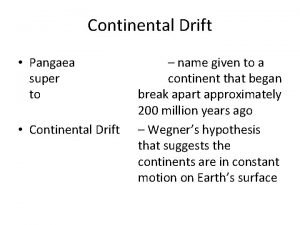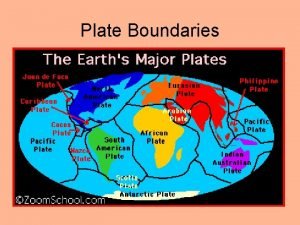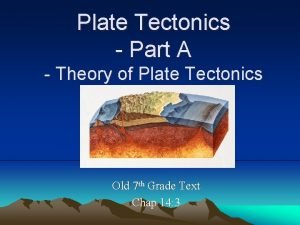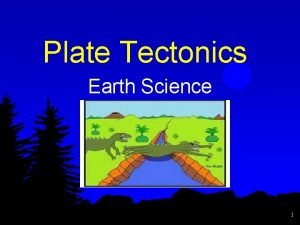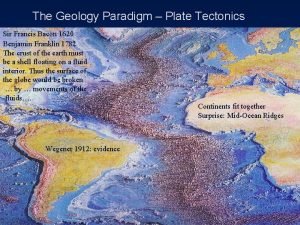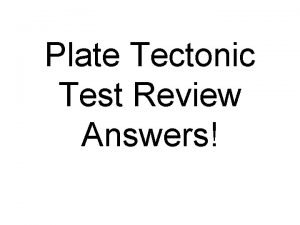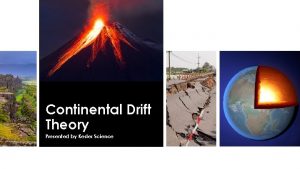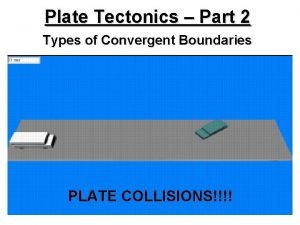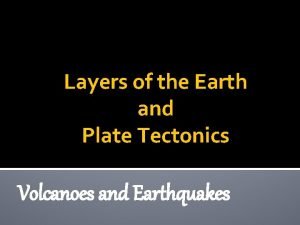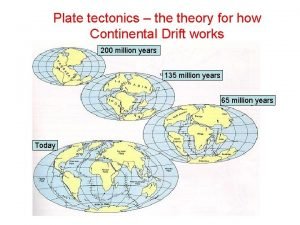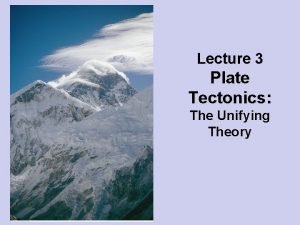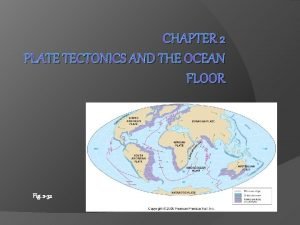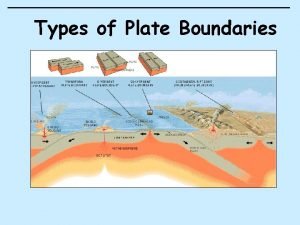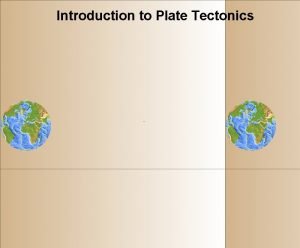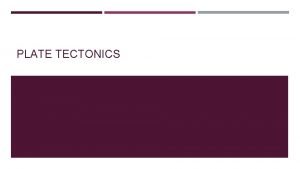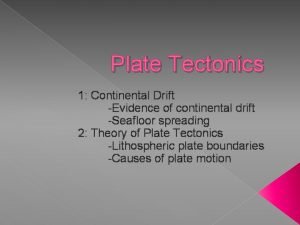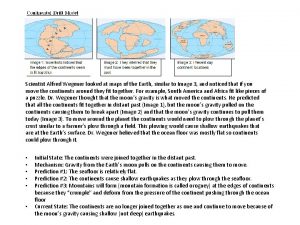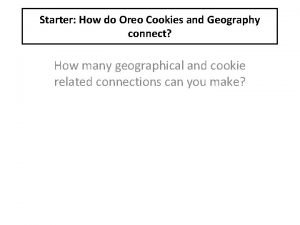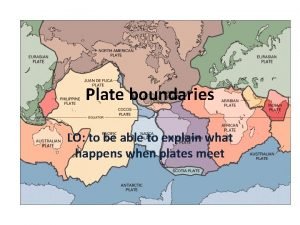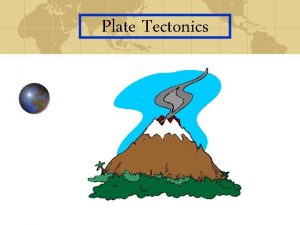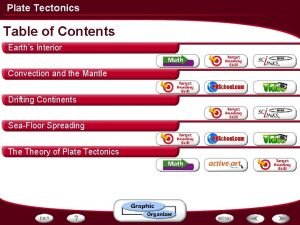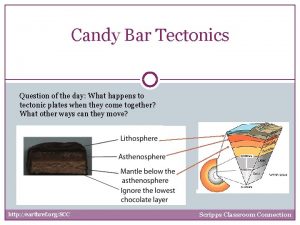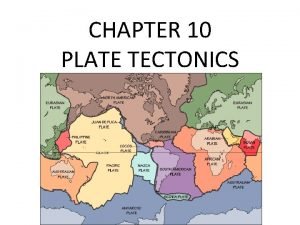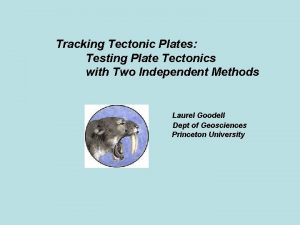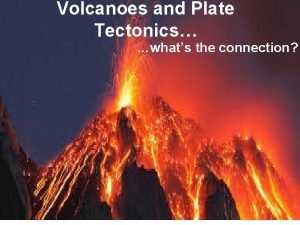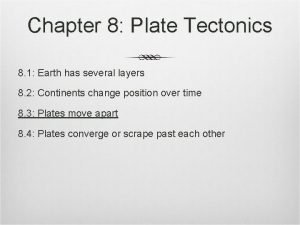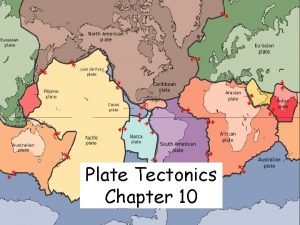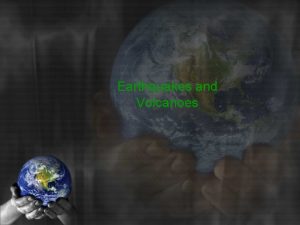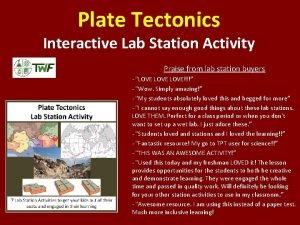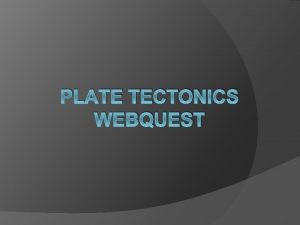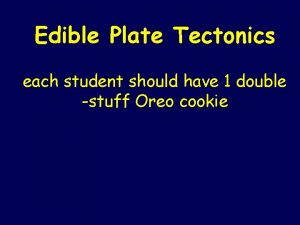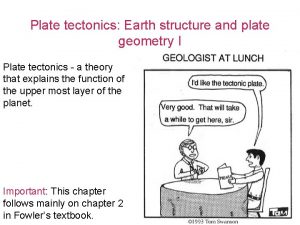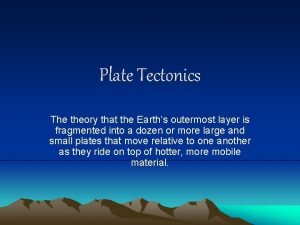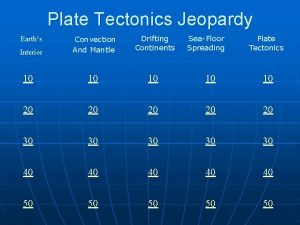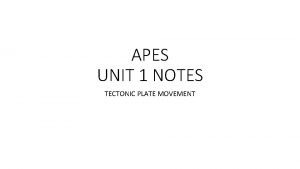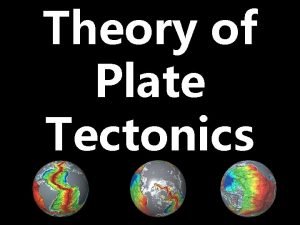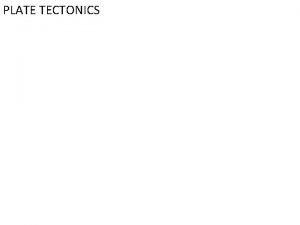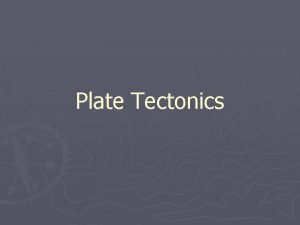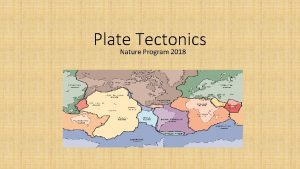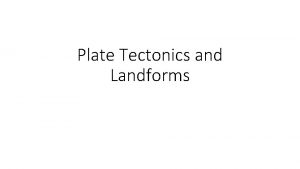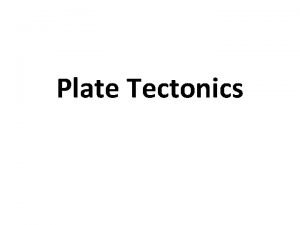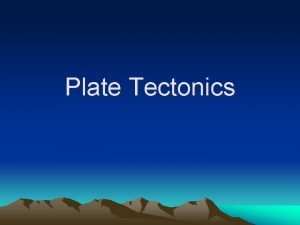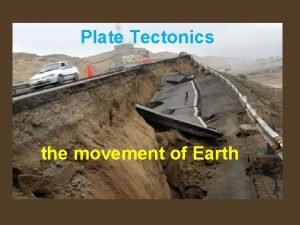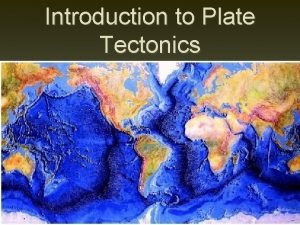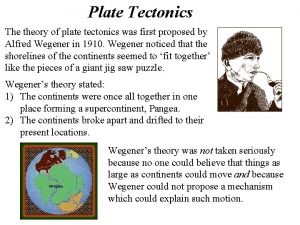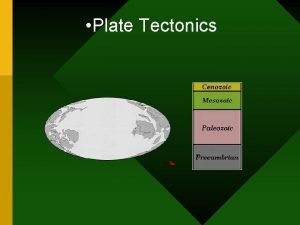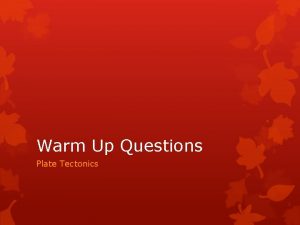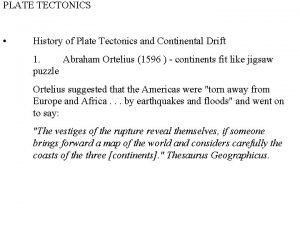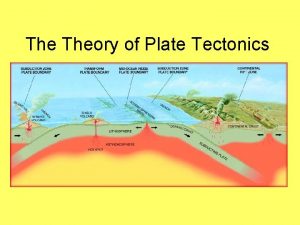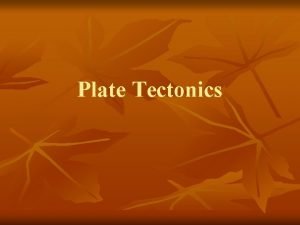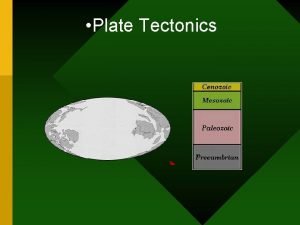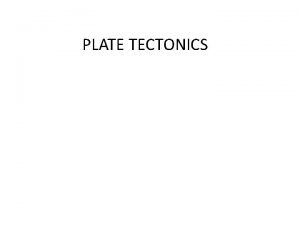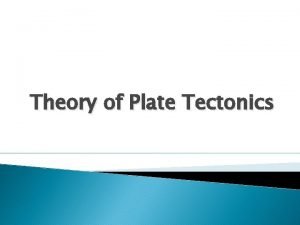Plate Tectonics What is Plate Tectonics Scientists know







































- Slides: 39

Plate Tectonics

What is Plate Tectonics? • Scientists know that Earth’s surface consists of a number of rigid, yet movable, pieces called plates. • The study of the formation and movement of these plates is called plate tectonics. • There about a dozen major plates and several minor plates.



These major plates are free of charge on page 5 of your ESRT. We will learn this page later this week.

About the Plates • Together, the crust and mantle of the Earth make up a single solid layer called the lithosphere. • The lithosphere is rigid, but broken up into these plates that move. • It is approximately 100 km thick. • Recall, there are two types of crust: oceanic and continental.

About the Plates • Which type of igneous rock makes up oceanic crust? • Yes, that’s right! Basalt • Which type of igneous rock makes up continental crust? • You got it! Granite • Which one is more dense? • You’re brilliant! It’s basalt. Of course, remember, we can go to page 10 of our ESRT and get that info for free!


About the Plates • The lithosphere rests on a layer in the mantle called the asthenosphere. • This layer is partially melted, thus, it’s what causes the plates in the lithosphere to move! • Guess what it is in the asthenosphere that forces the movement of the plates? • Our old friend… Convection Currents!!

About the Plates • Where convection currents are rising, it will push apart 2 plates!! • Where convection currents are sinking, it will pull 2 plates together!! • Convection current animation

This is also free of charge on page 10 of your ESRT!!

Evidences For Plate Tectonics • There are 4 major pieces of evidence that support theory of plate tectonics: • 1. Africa and South America • 2. Magnetism of Seafloor • 3. Earthquakes and Volcanoes • 4. Heat Flow and Seafloor Elevation

Evidences for Plate Tectonics • Africa and South America • There is a remarkable similarity in the shape of the west coast of Africa and the east coast of South America. • They look like they fit together like puzzle pieces. • This suggest that they were once together. • This theory is called the continental drift theory. • Alfred Wegener was the scientist who proposed this theory.

Evidences For Plate Tectonics • Wegener also noted that the fossil remains of the Mesosaurus were only found in 2 places: • 1. West coast of Africa • 2. East coast of South America • This further supported his theory. • The name for the large land mass that was all the continents together is known as Pangaea.

Evidences For Plate Tectonics Pangea Breakup Animation

More Fossil Evidence

Evidences For Plate Tectonics • Magnetism of Seafloor • Some igneous rocks contain magnetic minerals. • These minerals will align themselves towards Earth’s poles. • When we look at the bottom of the ocean floor, we see a banding pattern of magnetic minerals in the rocks. • They are aligned one way for a chunk of time and then reversed the other way.

Evidences For Plate Tectonics • This suggests that Earth’s poles have reversed in the past. • These bands allow scientist to date the rocks of the ocean floor. • The youngest rocks are found at the spreading center, where new rock is being formed. • The oldest rocks are found along the coasts of the continents. • This proves that the plates have been moving for millions of years.

Evidences For Plate Tectonics (Normal) (Reversed) •

Fig. 3 -12 Age of seafloor by magnetic stripes

Evidences For Plate Tectonics • Earthquakes and Volcanoes • It has been long observed that earthquakes and volcanoes DO NOT occur randomly on Earth’s surface. • Instead, they tend to occur in specific belts. • These belts just happen to be location of the boundaries between the plates. • These boundaries are so active that stress builds up and causes earthquakes. • In addition, the boundaries areas of extreme heat flow, causing volcanoes.


Location of earthquakes – each black dot is an earthquake

Evidences For Plate Tectonics • Heat Flow and Seafloor Elevation • Heat flow at plate boundaries provides evidence of convection currents in the asthenosphere. • Heat flow is highest at a spreading center, where two plates are moving apart. • At this center, the seafloor is elevated because the heated materials are expanding. • These elevated centers create ocean ridges. The most well-known is the Mid-Atlantic Ocean Ridge.


Types of Plate Boundaries • There are 3 main types of plate boundaries: • 1. Divergent • 2. Convergent • 3. Transform

Types of Plate Boundaries • 1. Divergent Boundaries • Also known as spreading centers. • 2 lithospheric plates are moving APART (diverging). • Most are found on the seafloor, forming ocean ridges. • Because of this, some of the world’s oceans are getting bigger! • Ocean ridges have valleys called rift valleys. • The rift valleys are broken into fracture zones. • These are the sources of earthquakes.

Divergent Plate Boundary Animation

Types of Plate Boundaries • 2. Convergent Boundaries • 2 tectonic plates are moving TOGETHER. (converging) • Three types of convergent boundaries: • 1. Ocean-Ocean crust convergence • 2. Ocean-Continental crust convergence • 3. Continental-Continental crust convergence

Types of Plate Boundaries • Ocean-Ocean Convergence and Ocean. Continental Convergence: • 2 oceanic plates coming together or 1 ocean plate and one continental plate coming together. • One plate will be pushed under the other (the MORE dense one gets pushed under). • This is called subduction. • Subduction creates trenches. • The subducted plate melts and this will form volcanoes or island arcs (volcanic islands).

Ocean-Continental Convergence Animation Ocean-Ocean Convergence Animation

Types of Plate Boundaries • Continental-Continental Convergence: • 2 continental plates are coming together. • When they collide, NO subduction occurs because continental crust is not very dense and one will not subduct another. • Instead, the crust gets crumpled and uplifted and often creates mountain ranges. • The most famous is the Himalayas when India collided with Eurasia.

India colliding with Eurasia animation

Types of Plate Boundaries • 3. Transform Boundaries: • 2 plates SLIDE past each other. • Crust will be deformed and fractured due to the friction and stress. • This will create faults and cause earthquakes at these boundaries. • Most famous transform fault is the San Andreas Fault in California.

San Andreas Fault Picture San Andreas Fault animation

Bridge over the Mid-Atlantic Ridge in Iceland!

Rift Valley in Iceland


Stop Plate Tectonics It’s Changing The Earth!
 Pangaea
Pangaea Plate tectonics vs continental drift
Plate tectonics vs continental drift Future plate tectonics
Future plate tectonics Driving force of plate tectonics
Driving force of plate tectonics Plate tectonics
Plate tectonics Convergent boundary divergent boundary transform boundary
Convergent boundary divergent boundary transform boundary Francis bacon plate tectonics
Francis bacon plate tectonics Plate tectonics test review answer key
Plate tectonics test review answer key Kesler science continental drift theory
Kesler science continental drift theory Boundaries of plate tectonics
Boundaries of plate tectonics Oreo plate tectonics
Oreo plate tectonics Convergent plate boundary
Convergent plate boundary Unifying theory of plate tectonics
Unifying theory of plate tectonics From now
From now Mariana trench plate boundary type
Mariana trench plate boundary type Theory of plate tectonics
Theory of plate tectonics What is this process called
What is this process called Plate tectonics
Plate tectonics Compare continental drift and plate tectonics
Compare continental drift and plate tectonics Oreo cookies plate tectonics
Oreo cookies plate tectonics Blank plate tectonics map worksheet
Blank plate tectonics map worksheet Juan de fuca plate
Juan de fuca plate Types of volcanoes
Types of volcanoes Seafloor spreading material at trenches
Seafloor spreading material at trenches Candy bar plate tectonics
Candy bar plate tectonics Fossils as evidence of continental drift
Fossils as evidence of continental drift Evidence of the theory of plate tectonics
Evidence of the theory of plate tectonics Strombolian eruption
Strombolian eruption Chapter 8 plate tectonics
Chapter 8 plate tectonics Summarize the theory of plate tectonics
Summarize the theory of plate tectonics Plate tectonics
Plate tectonics Plate tectonics interactive lab
Plate tectonics interactive lab Plate tectonics webquest answer
Plate tectonics webquest answer Oreo tectonic plates
Oreo tectonic plates Earth rotation
Earth rotation Plate tectonics
Plate tectonics Plate tectonics game board
Plate tectonics game board Plate tectonics definition
Plate tectonics definition Plates that move towards each other
Plates that move towards each other The plate tectonics theory states that
The plate tectonics theory states that
